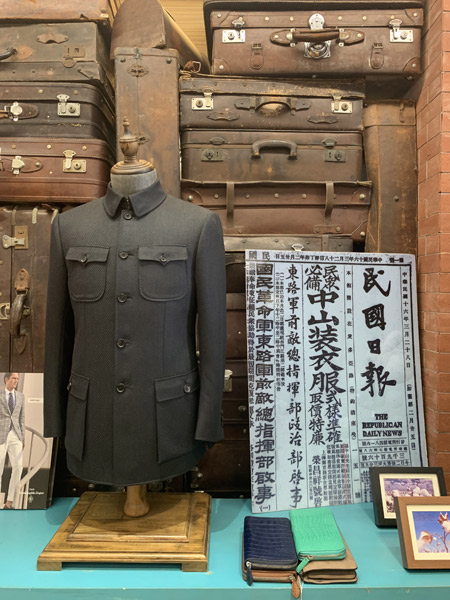Ningbo's profound tradition of making suits


The replica of a 1927 newspaper, with a piece of garment advertisement claiming the brand gained recognition from Sun Yat-sen. [Photo by FANG AIQING/CHINA DAILY]
"Tailors are found everywhere, especially in Ningbo."
This is how Qing Dynasty (1644-1911) scholar Qian Yong (1759-1844) started his literary sketch about a local tailor from the ancient city in East China's Zhejiang province.
Ningbo's dressmaking tradition evolved over a long period after that.
Tailors from the city have played an important role in the transformation of dressing styles in modern China. They created China's first Western-style suit, invented the Chinese tunic suit, opened the earliest Chinese-owned suit shop and a school to train tailors, as well as published the first textbook on making suits.
Now, the successors of those Ningbo tailors are struggling to inherit and develop its suit-making culture.
According to Qian's story, back then, most tailors in Beijing came from Ningbo. They dominated the capital's tailoring sector in the late Qing Dynasty as some inscriptions from 1905 suggest.
In 1896, Ningbo tailor Jiang Liangtong started one of the first suit shops in Shanghai. Until the beginning of the 20th century, Ningbo tailors had opened more than 400 suit shops along 10 major roads in Shanghai.
Ningbo tailors, especially those originally from areas on the banks of the Fenghua River and holding businesses in Shanghai, were often called hongbang (red band) tailors. This is because many of them were serving foreigners whom the Chinese had long referred to as "redhaired people". The tailors accounted for 60 percent of the practitioners in Shanghai by the 1940s. Tailors like Jiang learned to make suits in Japan, according to Li Benting, a researcher at the Ningbo Garment Museum.
In 1905, nationalist leader Sun Yat-sen commissioned Ningbo tailor Zhang Fangcheng, who was then living in Yokohama, to design a new style of outfit. Conforming to Chinese people's body shapes, disposition and lifestyle, Zhang applied Western cutting and sewing techniques, drew inspiration from student and sergeant suits and added Chinese cultural elements to the design.
This was later developed into what is now known as the Chinese tunic suit, a style that represents modern China, by brands like Rongchangxiang and Wangshuntai in Shanghai. Both brands published newspaper advertisements in 1927, promoting their products by claiming recognition from Sun by making suits for him.
MOST POPULAR
- 1 $39.7 billion worth of deals inked at Airshow China
- 2 China announces tax relief measures to stabilize real estate sector
- 3 A look at China's economy in October, 2024
- 4 Public holiday extension announced
- 5 China's NEV annual production hits 10 million milestone amid global carbon reduction efforts
Editors' Picks
 Infographic:
Golden jubilee of China-Brazil relations
Infographic:
Golden jubilee of China-Brazil relations
 Infographic:
A look at China's economy in October 2024
Infographic:
A look at China's economy in October 2024





